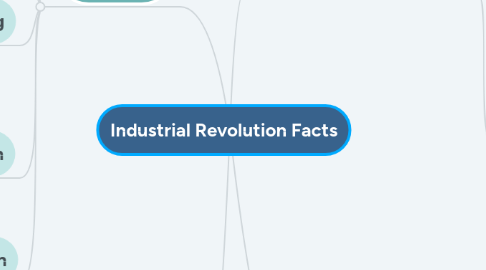
1. Drawbacks of Revolution
1.1. pollution to the earth - air, water, soil and others
1.2. natural resources were being used up at an alarming rate
1.3. advanced farming resulted in an increased of food and raw materials
1.4. urban areas unable to to keep up with the influx of immigrants workers due to unstoppable industrialization
1.5. industrialized area become overpopulated
1.6. changes in industry and new technology resulted in increased production of thousands and goods
1.7. companies were more efficient and earned bigger profits
1.8. people living in overcrowded housing and were prone to unsanitary conditions which led to diseases
2. Fourth Industrial Revolution
2.1. IR is originally the Use of Steam Engines, followed by the use of electricity and computers and communication technology. 4th IR is bringing together the digital, physical and biological system
2.2. futurework
2.2.1. millions of people will lost their job to the technology
2.2.2. new education and new training are needed for the workers to adapt with the current revolution
2.3. society
2.3.1. freedom of think freely of diversion and creative path
2.3.2. fulfilled basic need and solve problems with technology
2.3.3. need to adapt to the technology and need to redefine how to live and work as humans
2.4. 3D Printing
2.4.1. reduce waste product
2.4.2. freedom of design which for the sake of human intention
2.4.3. adding quality to quantity which is more safe and healthy to the world
2.5. energy revolution
2.5.1. clean energyreduce pollution
2.5.2. supply energy at all time
2.6. automation
2.6.1. computer-programmed robot to do works such as welding and assembly process
2.6.2. less error which gives more accurate and precise product
3. Leading Towards The Industrial Revolution
3.1. Before IR occurs
3.1.1. people resided in rural areas and worked as farmers commoners
3.1.2. commoners often experienced malnourishment and diseases
3.1.3. local rural shops and homes usually made simple tools and furniture
3.2. Mid 18th Century
3.2.1. Britain were involve in many wars
3.2.2. due to massive pressure to produce supply of goods needed Britain underwent industrial revolution.
3.2.3. Europe became the seat for scientific revoluiton by the idea of Isaac Newton, Galileo, Galilei and Nicholas Copernicus
3.3. 18th Century
3.3.1. inflow of immigrants led to the development of small industries.
3.3.2. India, as a British colony influenced have a huge production and trade of cotton
3.3.3. Britain became known as woolen industry and this establish trading relation with India and Southern US.
3.3.4. Britain took advantages to build industries such as shipbuilding, railroads and construction due to vast coal and iron
3.3.5. Bank of England were established to secure Britain's financial money and business flow.
4. Invention and Innovation
4.1. Assembly line
4.1.1. one of the biggest invention made by Henry Ford
4.2. steam power
4.2.1. new fuels such as coal and petroleum were used
4.2.2. its revolutionized may industries such as textiles and manufacturing
4.2.3. Thomas Newcomen developed first practical steam engine which was originally used to pump out water
4.2.3.1. James Watt improved steam engines to power machine, locomotives and ships
4.3. the Telegraph
4.3.1. made communicating across ocean easier and faster
4.4. spinning jenny -invented by James Hargreaves -enbled production of spools of thread continously
4.4.1. power loom -invented by Edmund Cartwright -mechanized weaving of cloth
4.5. Easier Iron Casting - invented by Abraham Darby
4.5.1. Cheaper mass production of steel - invented by Henry Besemer.
